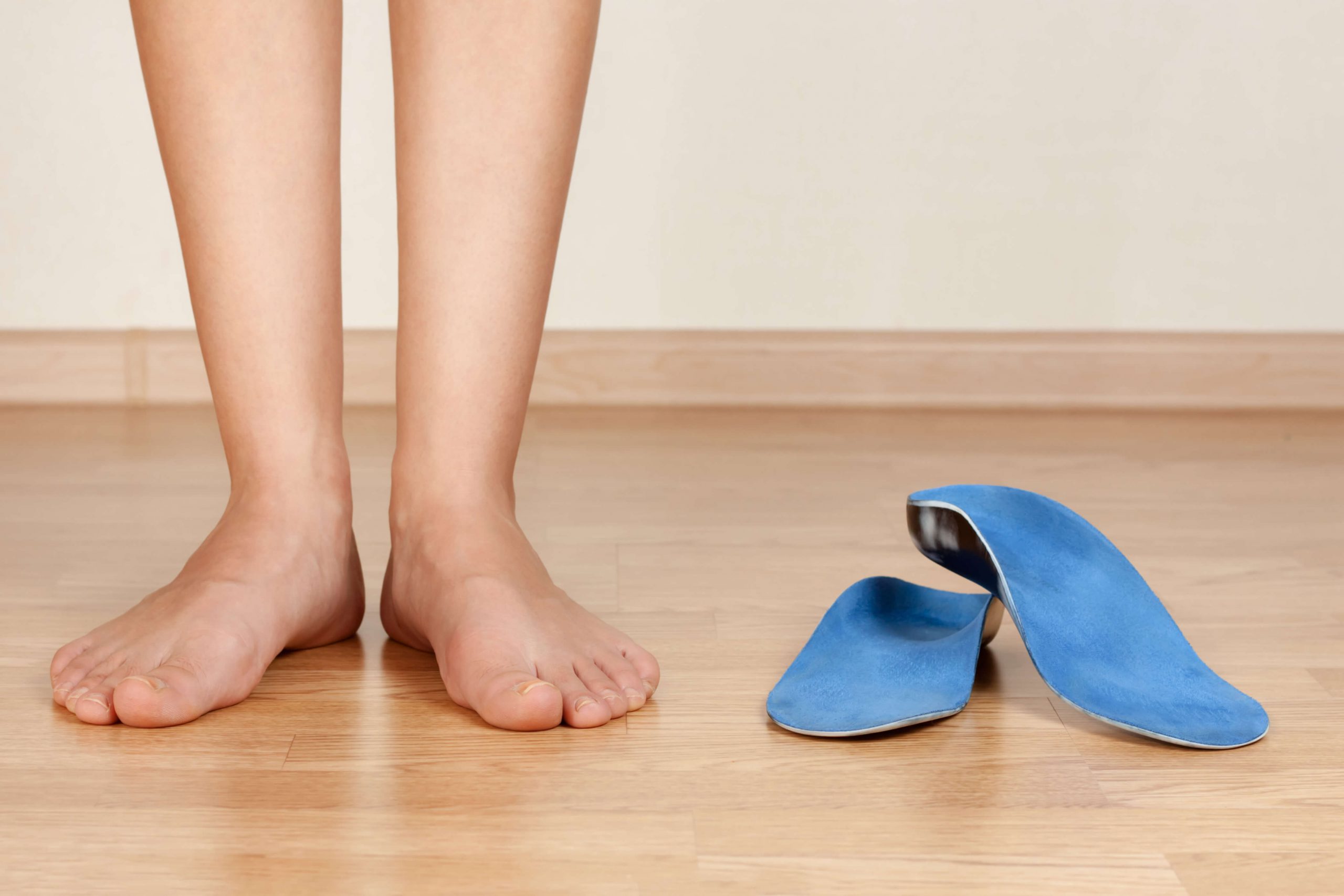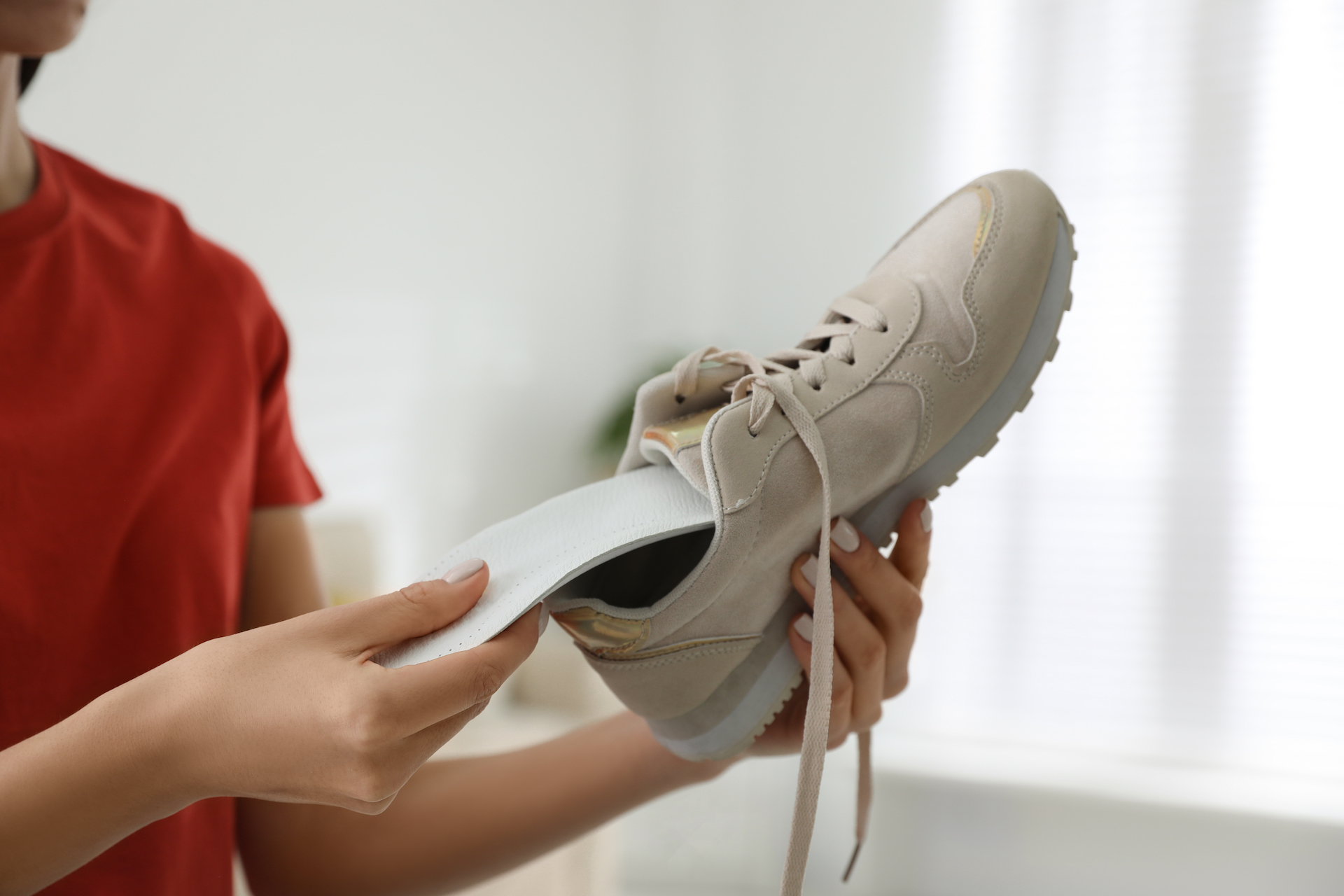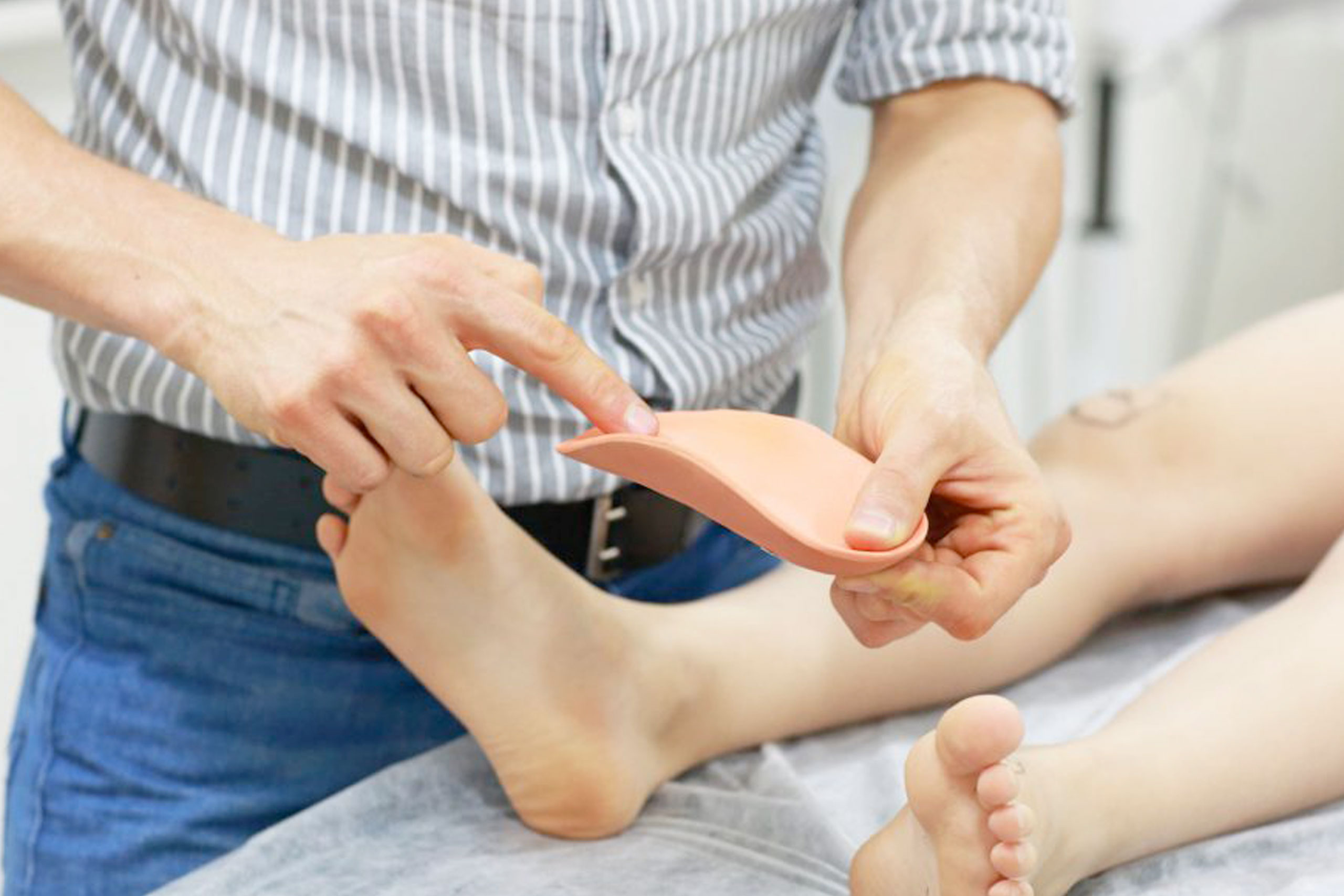





1) A Common Misconception
“I don’t want hard orthotics”…
We now think about the foot and biomechanics differently. We ARE NOT aiming to stop pronation. We are now aiming to slow the rate of this pronation down and reduce the over-pronation, in turn minimising the load through tissues that are prone to being injured. We call this the “tissue stress model”.
2) Orthotic material selection & shoe influence
3D printed Nylon and Polypropylene thermoplastic are considered by some to be “harder orthotics”. However, they now can be made very thin and flexible, typically ranging between 2.5-3.5mm thick. They act to slow and reduce pronation, flex under the foot and act somewhat like a spring – as they absorb and release energy at propulsion. This type of device can be of benefit for two main reasons:
- Often a casual shoe (or especially a football boot) offers little support through the midsole of the shoe, therefore this type of material has stronger characteristics, without adding too much bulk and so does not rely as much on the shoe for support.
- In the event the pathology/biomechanics requires more aggressive correction (through the orthotic’s applied force), this can be incorporated into the device, without again relying heavily on the shoe for increased stability.
Ethylene Vinyl Acetate (EVA) is a close cell foam that is utilised by Podiatrists all over the world and is quite common. This material is similar to the sole of your runners. This can be perceived by some people as being the “softer” version of orthotics. Yes, in some instances people prefer EVA under their foot and a wide range of densities can be utilised (including dual densities) in making an orthotic. Again, it is fundamental for the clinician to ensure the correct density of EVA is utilised and positioned in the correct spot under the arch and heel, otherwise what appears on the surface as being “soft” may in fact feel “hard”. These orthotics do tend to be bulkier and do rely more on the footwear for adding support.
There is no right and wrong with respect to material selection. Paul will discuss the various options with you and it will depend on factors such as; your BMI, your Foot & Ankle function and/or deformity, footwear goals and of course your preference, in addition to any previous experiences with orthotics.
3) What is Paul's point of difference?
“A better first impression – leads to a more accurate final product and Paul prides himself on not taking shortcuts on this step”.
Traditionally speaking, plaster casting was utilised to take an impression of the foot. The principles behind this were to ensure the clinician held, and somewhat manipulated the patient’s foot, to ensure a more neutral position could be achieved. This served as an improved reference point, in which the correction (positive manipulating force) could act against the foot, thus influencing the biomechanics. The Podiatrist would ensure; the forefoot was balanced with the rearfoot, the subtalar joint was in a neutral position (or as close to as possible), the midfoot locked and the foot was then suspended to replicate the elongation that occurs during weightbearing stance. Paul has been utilising this method for 15 years.
With the introduction of technology, it has become quite standard amongst the younger practitioners now, to utilise hand-held scanners attached to a tablet devices and the “old-school art of plaster work” has been phased out of tertiary education. Understandably, it creates mess, waste and is time consuming for clinicians. However, Paul feels quite strongly about the procedural limitations this type of scanning technology has. The camera might be accurate, but not necessarily the method and orthotics can be significantly adversely effected in the wrong hands!
For example, it is almost impossible for the client to hold their foot in the correct position, that closely represents subtalar joint neutral, without inadvertently twisting their forefoot and this influences negatively on the end result. The clinician cannot grasp the foot joints and manipulate them to form an accurate more neutral foot impression, as they are holding the scanner. So in Paul’s opinion, handheld tablet and phone scanners are fraught with danger! Some orthotic manufacturing labs will then try and correct poor procedural impression methods from their end. So your customised orthotic and the attached prescription form is then being manipulated by another party.
For the aforementioned reasons, Paul continues to cast and his impressions are balanced and closely reflect a neutral reference point. But pleasingly, there are no limitations to the type of orthotic device that can be achieved with this method. The plaster cast impression is then scanned into an electronic format. Therefore, a modern orthotic device can still be made from a plaster impression. Yes, it’s double handling and time-consuming, but Paul feels this is still the most accurate method in his opinion.
Paul works closely with an expert orthotic technician who brings over 20 years of industry experience. This trusted partnership allows Paul to create high-quality, custom orthotics without relying on large laboratories that mass-produce devices. Once Paul has taken casted impressions, they are then scanned and the orthotics are designed on CadCam technology. Paul’s technician then goes to work ensuring each pair is truly a bespoke fit, as clients also benefit from a unique service, which allows them to drop in their shoes, runners, football boots etc., to ensure precision fitting. This level of customisation and attention to detail is unmatched, providing a service you won’t find at too many other clinics.
4) What are the Pro’s & Con’s of Prefabricated Orthotics?
As prefabricated orthotics come in at a lower price point, they can be attractive for clients who may be trying orthotics for the first time and perhaps may be unsure of how they may feel and function. Sometimes they are a good option for those without private health insurance. They can also be effective during periods of unusual increased load, to minimise risk of injury and/or in temporary circumstances, where they may not be needed in the longer term. For example, pre-season training loads, training for a long-distance fun run, or even during pregnancy or postpartum.
There are limitations of prefabricated orthotics. For the reasons described above, sometimes the patient’s foot posture/deformity is too severe and will not lend itself well to a prefabricated orthotics (even with adjustments). Eg. Adult acquired flat foot (Tibialis Posterior Tendon Dysfunction) or a pes cavus (high arch) foot. From a wear and tear standpoint, they typically don’t last as long either.
If you are privately insured for Podiatry Extras, it is worth checking if you are covered for orthotics and which type. Some funds will pay-out significantly on custom devices, but sometimes not on prefabricated. This can influences people’s choice. The relevant item codes can be provided by our reception team, or by Paul during your initial consultation.







